The post Is Sports Betting Legal in Alaska? The Last Frontier Considers the Odds appeared first on AdTravel-Alaska Vacat.
]]>The Current Legal Framework
Alaska exempts the state from gambling laws that permit gambling by non-profit organizations, officially recognizing variations like bingo, raffles, and the state lottery. The government categorically criminalizes gambling activity that falls outside these allowances, a stance that appears quite conservative compared to the current trend of many states across the nation.
Sports betting, specifically, is not explicitly legalized or categorized as illegal in the existing gambling laws of Alaska. This non-clarification creates a gray area, drawing much debate on whether sports betting could fall under the state’s gambling prohibition. The ambiguity of this position prevents both supporters and critics from forming a definitive opinion.
The Social and Economic Debate
The legalization of sports betting is a topic that elicits passionate opinions. Proponents often cite the potential economic boost, from licensing fees and taxes collected by the state, to the increase in tourism that sportsbooks can generate. There’s also the argument for consumer protection, with supporters suggesting that legal betting can provide a safer environment for bettors compared to the black market.
Critics, however, express concerns over the potential for gambling addiction and its social implications. The moral debate surrounding gambling permeates the discussion, highlighting the need for tightened regulations and clear support systems for those who may develop issues with compulsive gambling.
Potential Future Legalization
Alaska’s future in the sports betting arena is unpredictable, but recent legal changes at the federal level might have implications. In May 2018, the U.S. Supreme Court ruled that the Professional and Amateur Sports Protection Act (PASPA) was unconstitutional. This decision opened the doors for states to individually legalize sports betting within their borders. Since then, over 30 states have either legalized or introduced legislation to legalize and regulate sports betting.
With public opinion shifting and the potential for economic benefits, there’s a chance that Alaska will consider introducing legislation for sports betting. However, numerous cultural, geographical, and political factors unique to the state may either expedite or impede this process. These include the tradition of gaming, remote and rurally distributed populations, and the state’s puzzle of local Native American bands, each with the autonomy to make their gambling rules.
Preparing for the Possibilities
No matter where the legal tide turns, staying informed is key for Alaskans and sports enthusiasts. Potential changes to laws in Alaska could bring about exciting new avenues for entertainment and engagement with sports. For those in the state with a passion for sports betting, understanding responsible gambling practices and staying updated on local developments will be crucial.
The future could bring a variety of outcomes for Alaska’s legal stance on sports betting. From complete prohibition to regulated onshore betting, or even remote possibilities of considering its own unique system, the range of possibilities is wide. While Alaskans wait for clarity, the conversation about the pros and cons of sports betting legalization will continue to evolve.
In closing, Alaska stands at a crossroads regarding sports betting. The Last Frontier could live up to its name by standing firm in its current stance, or it could blaze a new trail as one of the nation’s frontiers in legalized sports gambling. The choices and chances in this monumental decision will be ones for both history and the Alaskan community to determine.
For now, the specter of legal sports betting hangs in the air of the Last Frontier, waiting to see if it will be the hand that tips the balance. And as the state grapples with this decision, Alaskans have a front-row seat in a game where the odds are yet to be determined. Whether it’s cards, dice, or the final buzzer of a professional game, only time will tell if they’ll have any say in the wager.
Frequently Asked Questions (FAQs)
1. Is sports betting currently legal in Alaska?
No, sports betting is not currently legal in Alaska. The law does not explicitly legalize or outlaw sports betting, creating a gray area on this issue.
2. Can Alaska residents participate in online sports betting?
Since sports betting is not legally recognized in Alaska, participating in online sports betting falls into a legal gray area. Residents should exercise caution and be aware of the legal ambiguities surrounding online gambling.
3. What are the chances of sports betting becoming legal in Alaska?
The possibility exists, especially with changing national sentiments and laws regarding sports betting. However, any change would require new legislation, which is uncertain and dependent on various factors, including public opinion and political will.
4. How would legalizing sports betting impact Alaska?
Potential impacts include increased state revenue from taxes and licensing fees, enhanced consumer protection against unregulated gambling, and debates over the social implications, such as gambling addiction.
5. Are there any forms of legal gambling in Alaska?
Yes, Alaska allows gambling activities like bingo, raffles, and the state lottery, primarily for non-profit organizations. These are the main forms of gambling legally recognized in the state.
6. If sports betting were legalized, how would it be regulated in Alaska?
If legalized, sports betting would likely be subjected to regulation by a state commission or regulatory body, which would oversee licensing, enforce rules and regulations, and ensure the integrity of betting operations within the state.
7. How can Alaskans stay informed about changes to sports betting laws?
Alaskans should follow local news, official state government publications, and updates from advocacy groups either supporting or opposing sports betting legislation for the latest information.
The post Is Sports Betting Legal in Alaska? The Last Frontier Considers the Odds appeared first on AdTravel-Alaska Vacat.
]]>The post The Ultimate Guide to Determining the Worst Time to Visit Alaska appeared first on AdTravel-Alaska Vacat.
]]>Alaska, known as “The Last Frontier,” boasts pristine wilderness, majestic landscapes, and incredible wildlife encounters. However, your Alaskan experience can vary dramatically depending on when you choose to visit. Let’s explore in exceptional detail the worst times to visit Alaska:
Winter Wonderland: The Coldest Months
Alaska, often touted as a winter wonderland, is a captivating destination that attracts travelers year-round. However, when planning your visit, it’s crucial to understand the best and worst times to experience the Last Frontier. In this comprehensive guide, we’ll delve into the worst time to visit Alaska, which undoubtedly falls during the winter months of December to February. This period is characterized by extreme cold, limited daylight hours, and a host of weather-related challenges that can significantly impact your trip.
Weather Conditions
Alaska’s winter weather during December, January, and February is characterized by harsh conditions that can pose serious challenges to even the most adventurous travelers. Below, we provide a breakdown of the weather factors that make this the worst time to visit Alaska.
Average Temperatures:
- December: Below freezing
- January: Below freezing
- February: Below freezing
During these months, temperatures in Alaska plummet well below freezing, with daytime highs rarely climbing above the freezing point. Nighttime temperatures are even more frigid, often dropping to sub-zero levels. Travelers should be prepared for a bone-chilling cold and take measures to protect themselves from frostbite and hypothermia.
Daylight Hours
- December: Shortest day, with only 3-4 hours of daylight
- January: Minimal daylight
- February: Shortest day, with only 3-4 hours of daylight
One of the most significant drawbacks of visiting Alaska in winter is the limited daylight. With the shortest days of the year occurring in December and February, you’ll find yourself navigating the wilderness in near darkness for most of the day. This can greatly hinder your ability to explore the stunning landscapes and engage in outdoor activities.
Snowfall
- December: Frequent snowfall
- January: Frequent snowfall
- February: Frequent snowfall
Snowfall is a constant companion during Alaska’s winter months. Frequent and heavy snowfall blankets the region, making travel by road, especially in rural areas, challenging and treacherous. Additionally, the accumulation of snow can disrupt travel plans and lead to flight cancellations or delays.
Activities Limited
The extreme weather conditions during Alaska’s winter months severely limit the range of activities available to travelers. Here’s a closer look at the restrictions you’ll encounter:
- Outdoor Activities: Many popular outdoor activities, including hiking, kayaking, and wildlife viewing, are severely limited or entirely impractical during the winter months. The frigid temperatures and deep snow make it difficult to engage in these activities safely.
- Attractions and Accommodations: Several attractions, national parks, and accommodations may close for the season during the winter months due to the harsh conditions and decreased demand. It’s essential to check the availability of your desired destinations and accommodations well in advance if you plan to visit during this time.
Spring Thaw: The Muddy Months
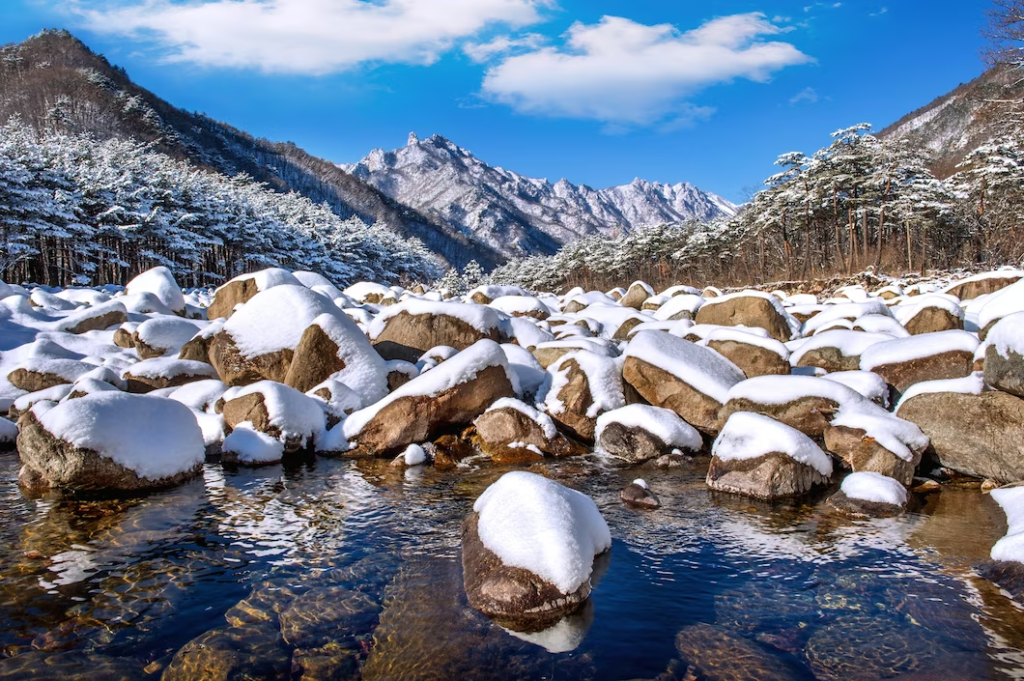
While spring is a season of renewal and vibrant blossoms in many parts of the world, it presents unique challenges when it comes to visiting Alaska. In this detailed guide, we’ll explore why March to April is considered the worst time to visit Alaska. During these months, the Last Frontier undergoes a dramatic transformation from the frigid grip of winter to the awakening of spring, bringing with it a host of distinctive conditions that can impact your travel experience.
Melting Snow and Ice
| Aspect | Description |
| Thawing Process | As temperatures gradually rise during March and April, the snow and ice accumulated during the winter months begin to thaw. This thawing process results in melting snow and ice, which, while essential for the region’s ecosystem, can create muddy and slushy conditions on both roads and hiking trails. |
| Road Travel Challenges | The melting snow and mud can make road travel challenging, especially in remote areas where road maintenance may be limited. Travelers should exercise caution, as roads can become slick and difficult to navigate. |
| Inaccessibility of Remote Areas | Some remote and off-the-beaten-path areas may be temporarily inaccessible during the spring thaw due to the muddy conditions. This can limit your ability to explore certain parts of Alaska. |
Wildlife Hibernation
Many wildlife species in Alaska are still in hibernation during March and April, making wildlife viewing less rewarding during this time. Here are some key points to consider:
- Hibernation Period: Numerous animals, including bears, ground squirrels, and marmots, undergo hibernation during the harsh winter months to conserve energy. As a result, they are not as active during the early spring months.
- Bear Watching: For those interested in bear watching, March and April are not the ideal months, as bears tend to remain in their dens during this period. Bear activity typically picks up later in the spring as they emerge from hibernation in search of food.
Shoulder Season: The Uncertain Months
Let’s explore why May and September are often considered the worst time to visit Alaska. These months fall into the shoulder season, a period that presents travelers with a mix of unpredictable weather, limited services, and unique considerations that can impact their Alaskan adventure.
May Weather Conditions
- May in Alaska can be characterized by its unpredictability. While spring is in the air, temperatures can still be chilly, and snow may linger in some areas, especially at higher elevations.
- Chilly Temperatures: Travelers should be prepared for chilly temperatures, with daytime highs ranging from the 40s to 50s Fahrenheit (4-15°C). Nighttime temperatures can dip even lower.
- Lingering Snow: Some regions, particularly in the interior and at higher elevations, may still have patches of snow on the ground. This can limit hiking and outdoor activities in certain areas.
September Weather Conditions
- September ushers in cooler temperatures in Alaska, with daytime highs averaging in the 50s to 60s Fahrenheit (10-20°C). However, it’s also a rainy month, which can impact outdoor activities.
- Rainfall: September sees an increase in rainfall, which can affect outdoor excursions such as hiking and wildlife viewing. It’s essential to come prepared with rain gear.
- Reduced Daylight: As the days grow shorter in September, travelers will experience fewer daylight hours, limiting the time available for exploration.
Reduced Tourist Services
- During the shoulder months of May and September, some tourist services may be reduced or even closed. This includes visitor centers, tour operators, and some attractions. It’s crucial to check ahead of time to ensure that your desired activities and services are available.
- Accommodation Prices: Despite the less-than-ideal conditions, accommodation prices in Alaska can still be relatively high during May and September, especially in popular tourist areas. Travelers should be prepared for this aspect of visiting during the shoulder season.
Mosquito Madness: The Bug-Infested Months
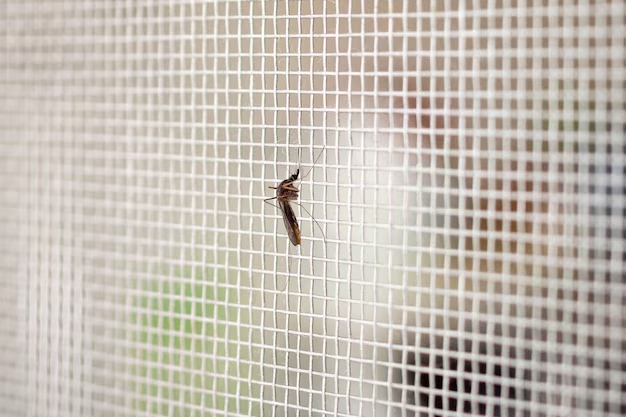
Alaska’s mosquitoes are legendary, and the worst time to visit Alaska for those who despise these buzzing insects is during the summer months.
Mosquito Swarms
One of the first things that come to mind when discussing the worst time to visit Alaska is undoubtedly the infamous mosquito swarms. June and July are the peak months for these blood-sucking insects, particularly in wetland areas. Here’s a detailed breakdown of what to expect:
| Aspect | Description |
| Mosquito Population | During June and July, Alaska witnesses a surge in mosquito populations, with millions of these tiny tormentors swarming various regions. |
| Wetland Areas | Wetland areas, such as marshes and lakeshores, are hotspots for mosquito activity during these months. The combination of standing water and warm temperatures creates ideal breeding conditions. |
| Daylight Hours | Alaska’s long daylight hours during summer mean that mosquitoes are active for extended periods, making it challenging to escape their relentless bites. |
| Outdoor Activities | Engaging in outdoor activities, such as hiking, camping, or simply enjoying a picnic, can become a test of patience as you contend with clouds of mosquitoes. |
While visiting Alaska in June and July, you must be adequately prepared to cope with the mosquito onslaught. Here are some essential tips:
- Use Repellents: Apply mosquito repellents containing DEET or picaridin to exposed skin and clothing. These products provide effective protection against mosquito bites.
- Wear Protective Clothing: Dress in long-sleeved shirts, long pants, and a head net to minimize skin exposure. Mosquitoes are less likely to bite through clothing.
- Stay Indoors During Peak Hours: Mosquitoes are most active during dawn and dusk. If possible, plan your outdoor activities during other times of the day.
- Stay Near Breezy Areas: Mosquitoes are less active in windy conditions. Opt for locations with a breeze to reduce mosquito encounters.
High Tourist Season
Aside from the mosquito menace, another factor that contributes to June and July being the worst time to visit Alaska is the peak tourist season. Here’s a detailed look at the impact of high tourist numbers during these months:
| Aspect | Description |
| Crowded Attractions | Alaska’s breathtaking natural attractions, such as Denali National Park and Glacier Bay, become crowded with tourists. This can diminish the serenity and solitude that many travelers seek in Alaska. |
| Accommodation Prices | The surge in demand for accommodations during summer leads to higher prices. Booking in advance is essential to secure lodging at a reasonable cost. |
| Tour Availability | Popular tours and activities may be fully booked if not reserved ahead of time. This can limit your options and spontaneity during your trip. |
To make the most of your trip to Alaska during the worst time to visit, consider the following strategies:
- Plan Ahead: Make reservations for accommodations and tours well in advance to secure your preferred options.
- Explore Lesser-Known Spots: While popular attractions are bustling, Alaska boasts numerous hidden gems and less-visited areas where you can enjoy tranquility and natural beauty.
- Travel Early or Late in the Season: If possible, visit Alaska in late May or early August to avoid the peak of both mosquito season and tourist season.
Smoke and Fire: The Wildfire Season
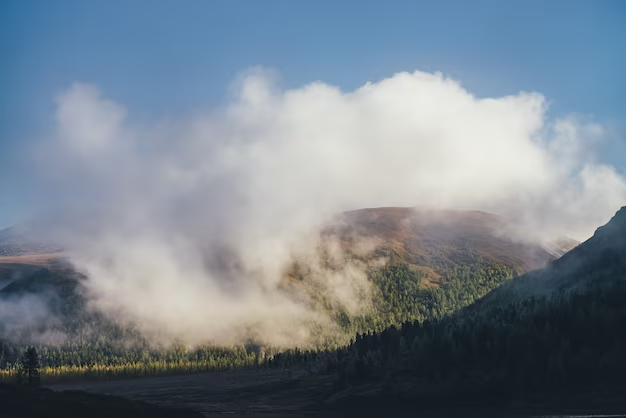
While August might seem like an ideal time for a summer vacation, it can be the worst time to visit Alaska due to wildfires.
Wildfire Risk
One of the primary factors that make August the worst time to visit Alaska is the heightened risk of wildfires. During this month, Alaska experiences the peak of its wildfire season, presenting various challenges for tourists:
| Aspect | Description |
| Increased Fire Activity | August typically sees a surge in wildfires across Alaska, with numerous blazes burning in various regions. |
| Smoke and Haze | As wildfires rage, the air becomes filled with smoke and haze, often obscuring the stunning scenic vistas that Alaska is renowned for. |
| Impact on Air Quality | Poor air quality resulting from wildfire smoke can pose health risks, particularly for individuals with respiratory conditions. It can also hinder outdoor activities such as hiking and sightseeing. |
If you find yourself in Alaska during August, it’s crucial to take measures to mitigate the effects of wildfire smoke:
- Stay Informed: Keep an eye on local news and weather reports for updates on wildfire locations and air quality conditions.
- Limit Outdoor Activities: On days with poor air quality, consider reducing or avoiding strenuous outdoor activities to protect your health.
- Use N95 Masks: If necessary, use N95 masks to filter out harmful particulate matter when outdoors in smoky conditions.
Safety Concerns
Beyond air quality issues, wildfires can disrupt travel plans and pose safety concerns for visitors to Alaska in August:
| Aspect | Description |
| Road Closures | Wildfires often lead to road closures, which can hinder your ability to reach planned destinations or accommodations. |
| Evacuations | In extreme cases, wildfires may necessitate evacuations from certain areas, potentially forcing you to alter your travel itinerary. |
To minimize the impact of wildfires on your trip to Alaska during the worst time to visit, consider the following strategies:
- Flexible Itinerary: Have a flexible travel itinerary that allows for changes in your plans due to potential road closures and evacuations.
- Travel Insurance: Purchase travel insurance that covers trip cancellations or interruptions due to natural disasters like wildfires.
- Stay Informed: Stay updated on wildfire conditions and road closures through official sources and your accommodation providers.
Conclusion
In this exceptionally comprehensive guide, we’ve explored the worst times to visit Alaska in extraordinary detail. Understanding the various factors that influence the timing of your Alaskan adventure is crucial to ensuring a memorable and enjoyable trip. While each season has its challenges, it also offers unique opportunities for those seeking an authentic Alaskan experience. Whether you’re chasing the Northern Lights in the winter or exploring pristine wilderness in the summer, Alaska has something to offer year-round. Plan wisely and embrace the Last Frontier’s natural wonders, no matter when you choose to visit.
FAQs
Is there a best time to visit Alaska?
The best time to visit Alaska depends on your interests and preferences. For milder weather and extended daylight hours, consider the summer months (June and July). If you’re interested in winter sports and the Northern Lights, winter (December to February) is your best bet.
Can I still visit Alaska during the worst times mentioned in the article?
Yes, you can visit Alaska during these times, but be prepared for challenging weather conditions and limited activities. Some travelers might still find value in the unique experiences these seasons offer.
Are there any benefits to visiting during the worst times mentioned?
Traveling during the worst times can mean fewer crowds, lower prices, and a chance to experience Alaska in a more rugged and authentic way. It’s all about your priorities and what you’re willing to tolerate.
How do I prepare for a trip to Alaska during the worst times?
When visiting during less favorable seasons, pack appropriately for the weather, research which activities and accommodations are available, and have a flexible itinerary in case of weather-related disruptions.
What’s the ideal time for wildlife viewing in Alaska?
The best time for wildlife viewing in Alaska is typically from late spring (late May) to early fall (early September) when many species are active and visible.
The post The Ultimate Guide to Determining the Worst Time to Visit Alaska appeared first on AdTravel-Alaska Vacat.
]]>The post Exploring the Beauty of Barbara Falls Eagle River: A Nature Lover’s Paradise appeared first on AdTravel-Alaska Vacat.
]]>History of Barbara Falls Eagle River
Barbara Falls Eagle River bears the name of Barbara Short, a local woman who played a significant role in preserving the area’s natural beauty. Her efforts led to the establishment of the Chugach State Park, which encompasses the falls. Today, this park stands as a testament to her dedication and passion for conservation.
Barbara Falls is a testament to the power of nature, shaped over millions of years by the flow of Eagle River. The falls themselves are a result of the river’s relentless erosion of the rock formations, creating a stunning, multi-tiered cascade that plummets into a crystal-clear pool below.
Ecology of Barbara Falls Eagle River
The ecology surrounding Barbara Falls Eagle River is as diverse as it is captivating. The falls serve as a focal point for both terrestrial and aquatic life, creating a delicate balance within this pristine ecosystem.
- Flora and Fauna: The lush vegetation that surrounds Barbara Falls is teeming with native Alaskan flora, including spruce and birch trees, mosses, and ferns. Wildlife enthusiasts will be thrilled to spot various bird species, such as eagles, hawks, and kingfishers, while lucky hikers may encounter moose, black bears, or even the elusive lynx.
- Aquatic Life: Eagle River, which feeds the falls, is home to a variety of fish species, including salmon and trout. These fish navigate the river’s currents and waterfalls as part of their annual migrations, providing a unique opportunity for visitors to witness the circle of life in action.
Hiking Trails and Access Points
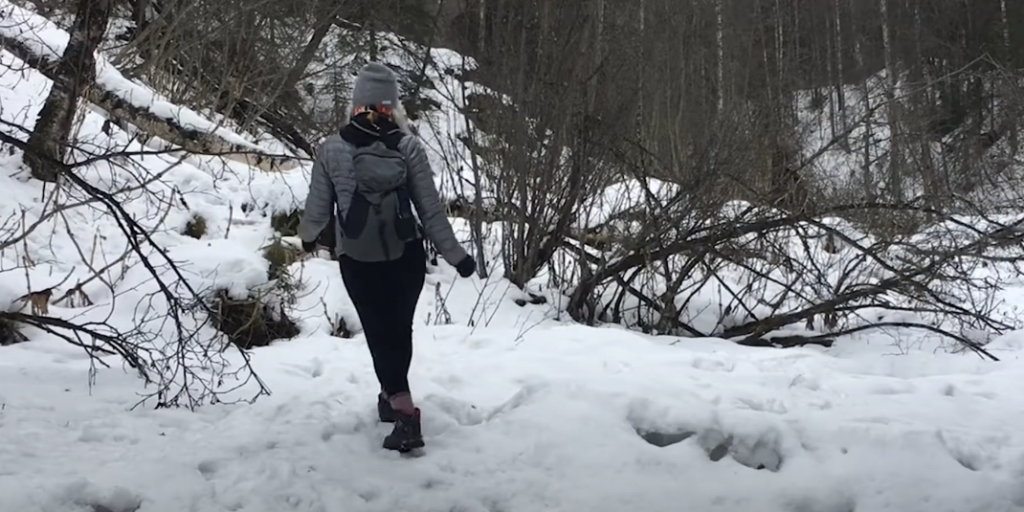
Exploring the beauty of Barbara Falls Eagle River is an adventure that can be tailored to different skill levels. Several hiking trails offer access to this natural wonder, each with its own unique features.
- Barbara Falls Trail: This well-marked trail, suitable for all ages, provides easy access to the falls. It’s a 3.6-mile round trip, taking hikers through a lush forest and alongside Eagle River. The trail culminates at an observation deck with a stunning view of Barbara Falls, making it perfect for photography enthusiasts.
- South Fork Trail: For a more challenging experience, consider the South Fork Trail. This 6-mile hike takes you deeper into the Chugach Mountains, offering panoramic views of the river valley and opportunities for birdwatching and wildlife encounters.
- Crow Pass Trail: For seasoned hikers seeking an extended adventure, the Crow Pass Trail offers a multi-day trek through pristine wilderness. Covering over 20 miles, this trail takes you through alpine meadows, across glaciers, and past scenic overlooks, with Barbara Falls serving as a highlight along the way.
Best Times to Visit Barbara Falls Eagle River
Barbara Falls Eagle River offers different experiences throughout the year, so choosing the best time to visit depends on your interests and preferences.
- Summer (June to August): This is the peak season for visitors, as the weather is warm and the trails are easily accessible. The falls are at their most powerful during this time, thanks to the melting snow from the surrounding mountains.
- Fall (September to October): Autumn transforms the landscape into a stunning tapestry of red, orange, and gold hues. The crisp air and fewer crowds make fall an excellent time for hiking and photography.
- Winter (November to March): If you’re a fan of winter sports, visiting Barbara Falls during this season allows you to explore snowshoeing and cross-country skiing trails. The frozen falls are a mesmerizing sight, and you may even catch a glimpse of the Northern Lights on clear nights.
- Spring (April to May): As the snow begins to melt, the water levels in Eagle River rise, making spring an exciting time to witness the falls at their most dynamic. However, be prepared for muddy trails and rapidly changing weather conditions.
Essential Tips for a Memorable Visit
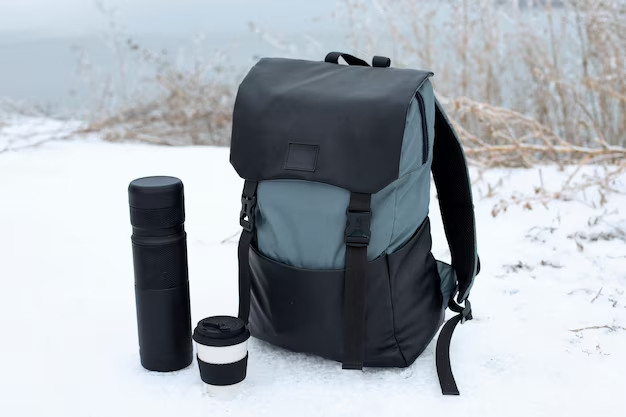
To ensure a safe and enjoyable visit to Barbara Falls Eagle River, consider these essential tips:
- Check the Weather: Alaska’s weather can be unpredictable, so always check the forecast and be prepared for sudden changes in conditions.
- Carry Bear Spray: This is a bear country, and it’s essential to carry bear spray and know how to use it. Make noise while hiking to alert wildlife to your presence.
- Pack Essentials: Bring plenty of water, snacks, and essential gear, such as sturdy hiking boots, rain gear, and layers for temperature changes.
- Leave No Trace: Respect the environment by packing out all trash, staying on designated trails, and avoiding damage to vegetation.
- Trail Etiquette: Yield the trail to uphill hikers, and keep dogs on leashes. Be courteous to fellow hikers and wildlife.
- Photography Tips: Capture the beauty of Barbara Falls by using a tripod for long-exposure shots, especially in low-light conditions. Don’t forget extra memory cards and batteries.
- Permits and Regulations: Check if any permits or regulations are in place for your visit. Some areas may have restrictions during certain times of the year.
Conclusion
Barbara Falls Eagle River is a testament to the enduring beauty of Alaska’s wilderness. Whether you’re an avid hiker, a nature photographer, or simply seeking a tranquil escape, this hidden gem offers a memorable experience in every season. With its rich history, diverse ecology, and captivating trails, Barbara Falls Eagle River beckons adventurers to immerse themselves in the pristine natural world of Chugach State Park. So, lace up your hiking boots, grab your camera, and prepare to be awed by the enchanting beauty of Barbara Falls Eagle River.
FAQs
How do I get to Barbara Falls Eagle River?
Barbara Falls is accessible via the Barbara Falls Trailhead, located off Eagle River Road in Chugach State Park. Follow the signs to the trailhead parking area.
Is there an entrance fee to visit Barbara Falls Eagle River?
No, there is no entrance fee to access Barbara Falls or hike the surrounding trails. Chugach State Park is a publicly accessible area.
Can I swim in the pool below Barbara Falls?
Swimming is not recommended due to the swift current and cold water temperatures. The pool can be dangerous, so exercise caution.
Are there camping facilities near Barbara Falls Eagle River?
There are no camping facilities at the falls themselves, but nearby campgrounds in Chugach State Park offer options for overnight stays.
Is it safe to hike in bear country?
While bear encounters are relatively rare, it’s important to be bear-aware. Carry bear spray, make noise on the trail, and learn about bear safety techniques before your hike.
Are there guided tours available for exploring Barbara Falls Eagle River?
Yes, there are guided tours and outfitters in the area that offer hikes and nature tours. They can provide valuable insights and enhance your experience.
The post Exploring the Beauty of Barbara Falls Eagle River: A Nature Lover’s Paradise appeared first on AdTravel-Alaska Vacat.
]]>The post Thunderbird Falls Alaska: Nature’s Majestic Oasis appeared first on AdTravel-Alaska Vacat.
]]>A Glimpse into Thunderbird Falls Alaska
Nestled within the Chugach State Park, Thunderbird Falls Alaska is a hidden gem that beckons travelers from around the world. It is located just 20 miles north of Anchorage, making it easily accessible for day trips or longer excursions. Named after the mythical Thunderbird, a legendary creature in Native American folklore, this natural wonderland lives up to its majestic reputation.
The Thunderbird Falls Trail
One of the highlights of Thunderbird Falls Alaska is the captivating Thunderbird Falls Trail. This well-maintained trail extends for approximately 1.2 miles (round trip) and offers a moderate hike suitable for adventurers of all ages and fitness levels. As you embark on this journey, you’ll be treated to:
- Spectacular Scenery: The trail winds through a lush forested landscape, with moss-covered trees towering above. Along the way, you’ll witness the vibrant colors of wildflowers in the spring and summer, and the stunning array of foliage in the fall.
- A Glimpse of Wildlife: Keep your eyes peeled for wildlife sightings. Moose, black bears, and eagles are just a few of the creatures that call this area home. Don’t forget to bring your camera to capture these incredible moments.
- The Iconic Thunderbird Falls: The trail culminates at the magnificent Thunderbird Falls themselves. The sight of the cascading water, tumbling over rocks into a pristine pool below, is nothing short of enchanting. The falls are at their most impressive during the spring and early summer when the snowmelt feeds the stream.
What to Bring
Before embarking on your Thunderbird Falls adventure, it’s crucial to be prepared. Here’s a checklist of essential items to bring:
- Hiking Boots: Sturdy and comfortable hiking boots are a must to navigate uneven terrain.
- Weather-Appropriate Clothing: Dress in layers, depending on the season. Alaska’s weather can be unpredictable, so be prepared for rain, wind, or sunshine.
- Water and Snacks: Stay hydrated and energized with an ample supply of water and trail snacks.
- Camera and Binoculars: Capture the beauty of Thunderbird Falls and keep an eye out for wildlife.
- Insect Repellent: Protect yourself from pesky mosquitoes, especially during the summer months.
- First-Aid Kit: A basic first-aid kit can be handy for minor injuries or emergencies.
- Map and Compass: Even though the trail is well-marked, having navigation tools is a good practice.
Exploring Thunderbird Falls Alaska: Activities and Attractions
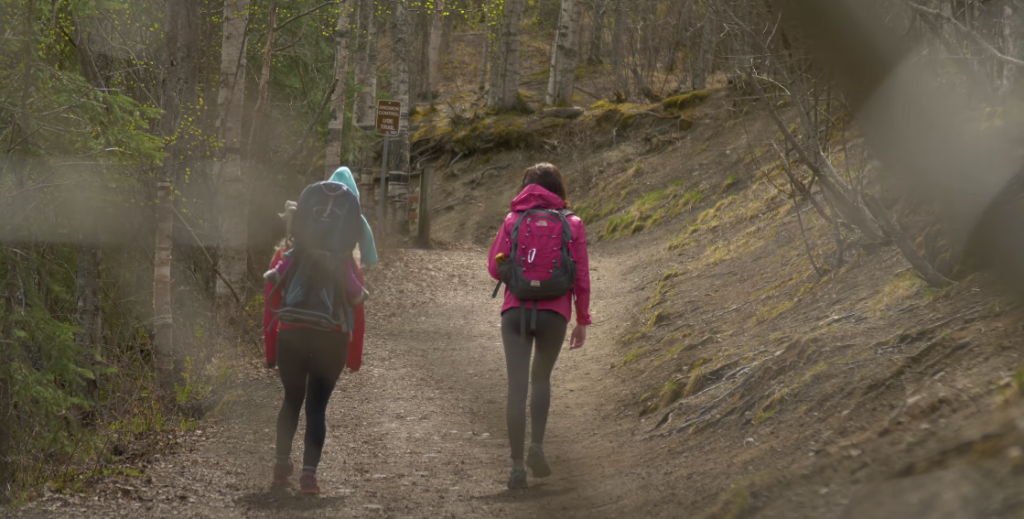
Thunderbird Falls Alaska offers a wealth of outdoor activities and attractions that cater to a wide range of interests. Here’s a breakdown of what you can expect:
Hiking and Nature Walks
As mentioned earlier, the Thunderbird Falls Trail is a fantastic hiking experience. However, it’s just one of many trails in the area. For a more extended adventure, consider exploring the Eklutna Lake Trail or the Twin Peaks Trail, both of which offer stunning vistas and opportunities to immerse yourself in the Alaskan wilderness.
Table: Thunderbird Falls Alaska Hiking Trails
| Trail Name | Length (Round Trip) | Difficulty | Highlights |
| Thunderbird Falls Trail | 1.2 miles | Moderate | Thunderbird Falls, wildlife sightings |
| Eklutna Lake Trail | Varies | Moderate | Eklutna Lake, mountain views, wildflowers |
| Twin Peaks Trail | Varies | Challenging | Panoramic vistas, alpine terrain, solitude |
Wildlife Viewing
Alaska is renowned for its diverse wildlife, and Thunderbird Falls is no exception. Keep your eyes peeled for moose, black bears, and bald eagles during your visit. For the best chances of spotting these creatures, visit during the early morning or late evening hours.
Table: Wildlife to Spot at Thunderbird Falls Alaska
| Wildlife | Best Viewing Times | Tips |
| Moose | Early morning, evening | Stay quiet and observe from a distance |
| Black Bears | Early morning, evening | Carry bear spray and make noise on trails |
| Bald Eagles | Year-round | Look for them near water sources |
Photography
Photographers will find Thunderbird Falls Alaska to be a paradise for capturing the beauty of nature. Whether you’re an amateur with a smartphone or a professional with high-end equipment, the scenic vistas, wildlife, and waterfalls offer endless opportunities for stunning photographs.
Table: Photography Tips at Thunderbird Falls Alaska
| Photography Opportunity | Tips |
| Thunderbird Falls | Use a tripod for long exposure shots |
| Wildlife | Use a telephoto lens for close-ups |
| Scenic Vistas | Experiment with different angles and lighting |
Picnicking
Pack a picnic and enjoy a meal amidst the pristine beauty of Thunderbird Falls. There are designated picnic areas with tables where you can savor your food while surrounded by the sights and sounds of nature.
Table: Picnicking Facilities at Thunderbird Falls Alaska
| Picnic Area | Facilities |
| Thunderbird Falls | Picnic tables, trash disposal |
| Eklutna Lake | Picnic tables, restroom facilities |
| Twin Peaks | Picnic tables, scenic views |
Winter Adventures
If you visit Thunderbird Falls Alaska during the winter months, you’re in for a treat. The landscape transforms into a winter wonderland, perfect for activities like snowshoeing and cross-country skiing. Just be sure to check the trail conditions and pack appropriate gear.
Table: Winter Adventure Opportunities at Thunderbird Falls Alaska
| Winter Activity | Tips |
| Snowshoeing | Rent or bring snowshoes and dress in layers |
| Cross-Country Skiing | Check trail conditions and wax your skis as needed |
Bird Watching
Bird enthusiasts will be delighted by the avian diversity in the area. Bring your binoculars and bird guidebook to identify the various species that inhabit the Chugach State Park.
Table: Notable Bird Species at Thunderbird Falls Alaska
| Bird Species | Habitat and Behaviors |
| Bald Eagle | Often seen near water sources |
| Red-breasted Nuthatch | Forages in coniferous trees |
| American Dipper | Dives into streams for aquatic insects |
| Spruce Grouse | Found in dense coniferous forests |
Travel Tips for Thunderbird Falls Alaska
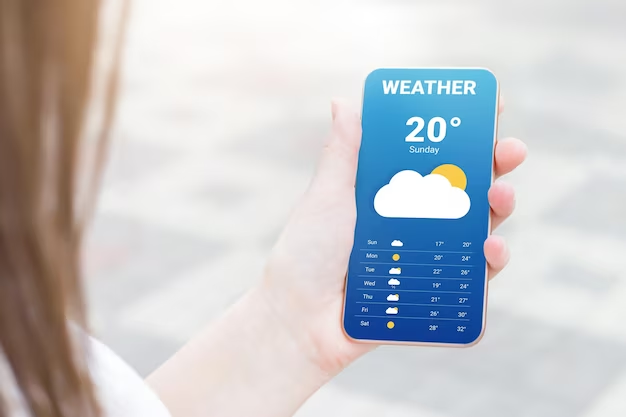
To make the most of your visit to Thunderbird Falls Alaska, consider these helpful travel tips:
- Check the Weather: Alaska’s weather can be unpredictable, so it’s essential to check the forecast before your trip. Dress appropriately and be prepared for sudden changes in weather conditions.
- Time Your Visit: The best times to visit Thunderbird Falls Alaska are in the spring and summer when the weather is milder, and the waterfalls are at their most impressive. Fall offers beautiful foliage, while winter provides a unique snowy landscape.
- Safety First: While Thunderbird Falls is a relatively safe destination, it’s essential to practice safety precautions. Stay on marked trails, carry bear spray if hiking in Bear Country, and let someone know your plans before heading out.
- Respect Wildlife: If you encounter wildlife, maintain a safe distance and avoid feeding or approaching them. Wildlife should be observed from a distance to ensure their safety and yours.
- Leave No Trace: Follow the Leave No Trace principles by packing out all trash, staying on designated trails, and respecting the natural environment.
- Plan Your Day: Depending on your interests, plan to spend at least a few hours exploring Thunderbird Falls. The beauty of the area is best appreciated when you have ample time to soak it all in.
Conclusion
Thunderbird Falls Alaska is a natural wonder that invites adventurers and nature enthusiasts to immerse themselves in the unspoiled beauty of Alaska’s wilderness. With its breathtaking scenery, diverse wildlife, and a range of outdoor activities, Thunderbird Falls promises an unforgettable experience for all who visit. So, pack your bags, lace up your hiking boots, and get ready to explore the wonders of Thunderbird Falls Alaska, where nature’s majesty awaits at every turn.
FAQs
Q1: Can I swim in the pool below Thunderbird Falls?
A1: Swimming is discouraged due to strong currents and cold water temperatures. The pool can be deceptively dangerous, so it’s best enjoyed from a safe viewing area.
Q2: Are there camping facilities at Thunderbird Falls Alaska?
A2: There are no camping facilities at Thunderbird Falls itself, but nearby Chugach State Park offers various campgrounds for those looking to spend the night in the area.
Q3: Is Thunderbird Falls Alaska accessible year-round?
A3: Yes, Thunderbird Falls can be visited throughout the year. However, the best times to visit are during the spring, summer, and early fall. Winter visitors can enjoy snow-related activities.
Q4: Are there entrance fees to access Thunderbird Falls?
A4: There are no entrance fees to access Thunderbird Falls, as it is located within Chugach State Park. However, you may need to pay for parking at the trailhead.
Q5: Can I bring my dog to Thunderbird Falls?
A5: Yes, you can bring your dog to Thunderbird Falls, but it must be kept on a leash at all times. Be sure to clean up after your pet and respect other visitors.
Q6: Are there restrooms along the Thunderbird Falls Trail?
A6: There are restroom facilities at the trailhead, but there are no restrooms along the trail itself. Be prepared to use the facilities before beginning your hike.
The post Thunderbird Falls Alaska: Nature’s Majestic Oasis appeared first on AdTravel-Alaska Vacat.
]]>